The world is facing a pivotal year in responding to a climate crisis already affecting most parts of the planet.
It is set to get a lot worse, if an emergency response is not adopted by countries acting together to force down carbon emissions and contain temperature rise.
A series of events and actions emerging from them, globally and in Ireland, will determine if Earth's life-support system – the combination of our natural world and climate system – can somehow be put back on the right track with minimal permanent damage.
The scientific evidence points to terminal decline, driven by the wrong kind of human activities spewing out greenhouse gases which are overheating the planet at a prodigious rate, while supercomputers are showing the climate is even more sensitive than we thought a decade ago.
The Covid-19 pandemic illustrated the vulnerability of our interlinked world. That is multiplied many times by runaway climate change. The fall in emissions due to the pandemic was a blip. Destabilisation is taking place on our watch. Business-as-usual is not an option.
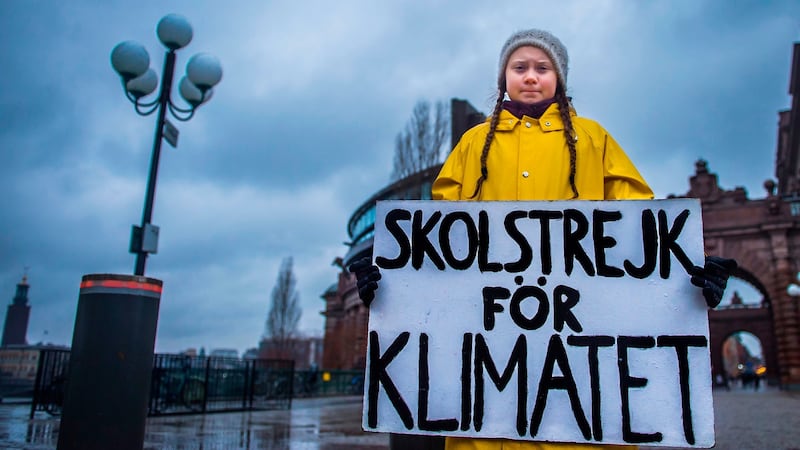
WHAT’S HAPPENING?
COP26
What is it?
COP26 is the single most important upcoming event to address climate issues; a real chance to put Planet Earth on a sustainable course. For almost 30 years the UN has brought together countries for a global climate summit, the "conference of the parties". Climate action has gone from fringe issue to a global priority. This year it takes place in Glasgow during from Monday, November 1st to Friday, November 12th. It will be the key test of the extent of global resolve to address an existential threat to humanity.
Who's involved?
Leaders from 195 countries – signatories to the landmark 2015 Paris Agreement – will attempt to firm up promises to ensure there is a better chance of containing temperature rise to 1.5 degrees this century; the critical target in the pact. The UN General Assembly this week was the latest attempt to secure commitments in advance that give COP26 a better chance of success – the gap on what's needed is still glaring.

Almost every country of the world is around the table; big wealthy states whose economies have prospered under ever-increasing fossil fuel use – the biggest contributor to global warming – and poorer countries; the least culpable already bearing the brunt of accelerating climate change.
In close proximity will be thousands of negotiators; government representatives, business leaders expounding on their climate commitments, justifiably sceptical climate activists and citizens (given gross failures to date); all feeding into 12 days of intensive talks.
The deadline?
It has long passed, because the response to the climate emergency so far has been tardy, insufficient and marked by lack of co-operation – time to avoid catastrophic impacts is running out. Previously, weak agreements facilitated inaction; this time is "the world's best last chance to get runaway climate change under control".
Why should we care?
We should be worried because, as Greta Thunberg put it: "Our house is on fire". If in doubt, just look at summer 2021; its blistering temperatures, devastating floods, unrelenting climate-driven wildfires, even at normally cool latitudes, and melting Arctic ice sheets happening at a much faster rate than anticipated.
Alarm bells are ringing across the northern hemisphere. The forecast is for more frequent and intense extreme weather events. Ireland does not escape in that scenario. We are all on the verge of the abyss.
Will it work?
Imperfect as it is, the COP process is the only established global mechanism for collective action. Good COP outcomes show it's possible to act in unison despite political tensions and economies operating at different paces.
What must concentrate minds at its 26th gathering is: global emissions must be halved by 2030 and “net-zero emissions” achieved by 2050 at the latest to have any chance of containing temperature rise to 1.5 degrees above pre-industrial times (since the 1850s).
IRELAND’S FIRST CARBON BUDGET
In tandem with efforts to scale-up the global response, Ireland is about to embark on a series of sequenced events in the coming weeks to give substance to its commitment to reduce emissions by 51 per cent over the coming decade, before pushing on for net zero emissions. It’s an immense task, given overall Irish emissions continue to rise.
This sequencing arises from the European green deal – the EU masterplan to decarbonise Europe by mid century. The far-reaching Climate Act is the policy driver. The first cog is setting the country's first five-year carbon budget.
What is it?
A carbon budget has nothing to do with euros, but has major implications for how the economy operates. It sets the total amount of emissions permitted over a set period based on scientific indications on what can be expended while keeping temperature rise to 1.5 degrees.
The “decarbonisation target range” will recommend acceptable emissions in different sectors, including transport, agriculture, power generation, heating buildings, food production and manufacturing, ie any product made in Ireland. This is to comply with a safety limit for CO2 in the atmosphere. Stable at 280 parts per million (ppm) for thousands of years up to the industrial revolution, this acted as the Earth’s thermostat. Now it’s 411 ppm and out of control.
Who's involved?
Headline figures will be proposed by Climate Change Advisory Council experts, finalised by the Minister for the Environment and Climate in consultation with all departments of the public service, and approved by the Government. The all-party Oireachtas climate committee will have an oversight role on compliance.
The deadline?
It needs to be in place this year, so two budgets will apply over the upcoming critical decade.
Why should we care?
Ireland may be parading itself as a global leader on climate ambition, but it has failed dismally to meet previous commitments – per capita emissions are among the highest in the world. The notable exception is high levels of renewable energy being fed into the national grid.
Budgets are a mechanism to apply discipline, monitor performance and show where problems persist in switching to a decarbonised economy and society. They will have far-reaching implications for business leaders and workers alike.
Will it work?
Where operated rigorously, carbon budgets are highly effective, especially in flagging longer-term direction of travel. Once adopted, they cannot be changed following a change of government.
But all emissions must be properly counted and reported. This is especially important with methane in agriculture because it’s such a menacing greenhouse gas and accounts for a third of national emissions. Ceilings are legally binding but penalties for non compliance have yet to be spelled out.
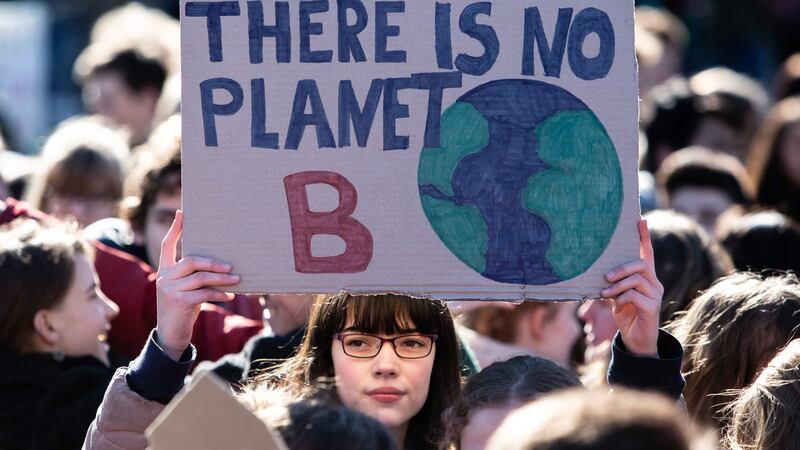
REVAMPED CLIMATE ACTION PLAN
Carbon budget limits announced later this month will feed into a revised national climate action plan to be unveiled in October.
What is it?
The plan will encapsulate Climate Bill targets including programme for government commitments, and will be core to a "national energy and climate plan" to be submitted to the EU by year end. It will also form part of Ireland's "national determined contributions", spelling out what the country is pursuing in an international context. It amounts to the substance on promises to slash emissions by 7 per cent on average over the next decade.
Who's involved?
All arms of Government including State agencies help forge the plan, with the Department of the Environment, Climate and Communications, and line Minister Eamon Ryan, taking the lead.
The deadline?
Imminent – because it determines Ireland's position at COP26 and must complement EU plans to be the world's first decarbonised continent.
Why should we care?
For those who want Ireland to do its fair share in responding to the climate threat, it is the critical mechanism. It must show "the how" on achieving targets in great detail. In contrast, previous plans have been ineffective and vague, delivering incremental progress at best.
Will it work?
It's all down to delivery including pace of implementation, and having sufficiently robust oversight; ie addressing the weakest aspects of previous versions.
NEXT IPCC VERDICT
The reliable constant over coming months will be the latest scientific evidence. The single most important channel for this is the Intergovernmental Panel for Climate Change (IPCC), and notably the completion of its sixth global assessment report (AR6).
What is it?
The IPCC was set up by the UN and the World Meteorological Organisation to evaluate climate science. It informs governments on setting policy. It does not conduct climate research. It amalgamates research to identify where there is agreement in the scientific community, where there are differences of opinion and where further research is needed.
Who is involved?
Leading climate scientists including specialists in weather, data modellers and atmospheric physicists, as required from those 195 countries.
The deadline?
First quarter of 2022.
Will it work?
It's fair to say it has already shown its worth, and proven repeatedly to be the best authority on solving the climate crisis. In August, the first instalment of AR6 confirmed climate disruption is "widespread, rapid and intensifying". It has been described as "the final warning bell – the most important assessment of humanity's future on Earth to date".
The second and third elements, setting out to what extent the world is resilient and adapting to meet inevitable impacts chasing down the tracks, and what solutions are achievable in cutting emissions (mitigation), follow early in 2022 – as well as an overall synthesis report reinforcing the blunt message: opportunity to limit temperature rise to 1.5 degrees is rapidly closing but still scientifically, technically and economically possible.

We live in the anthropocene era, where human action is the dominant influence on climate and the environment. Unfortunately, we no longer live in the “not too hot, not too cold” (Goldilocks conditions) of the holocene epoch which began 12,000 years ago and ended in the 1950s – due to the industrial revolution and escalating fossil fuels use.
In spite of the huge complexities in getting the world off its fossil fuels fix, there are obvious indicators to show if we are on the right track or even minimising risk in a more turbulent, overheating world.
Reduce emissions
The first law of climate science says reducing all forms of greenhouses gases – in particular carbon and methane – equals reduced global temperatures. Global emissions are set to rise 16 per cent by 2030 compared with 2010, based on existing climate pledges formally submitted by parties to the Paris Accord.
Slow rising temperatures
Month after month record temperatures are being recorded across the planet. As noted by climate scientists Johan Rockström and Owen Gaffney in Breaking Boundaries – the Science of Our Planet, "the 1.5 degree target slips farther from our grasp as each year goes by: literally, the remaining carbon budget shrinks more than 10 per cent each year if we continue to burn fossil fuels at the same rate as 2019." Less burning, means less emissions in the atmosphere and reduced global temperatures.
Improve resilience
Being prepared for the inevitable impacts (more extreme weather, sea-level rises that will take centuries to abate) is critical to withstanding climate shocks that will hit entire populations. Known as adaptation, it must be pursued relentlessly by cities and coastal communities because of their particular vulnerability. The poorest countries have the least ability to respond.
Enhance nature
Shocking numbers of species are on a path to extinction, likewise habitats undermined by human activity. That is fuelling a parallel biodiversity crisis. "We are shredding the fabric that gives the Earth system its deep resilience," note Rockström and Gaffney. This is impairing the ability to provide less costly and less intrusive nature-based solutions to the climate crisis.
How we respond on these four fronts, nationally and globally, will dictate progress/lack of progress in avoiding tipping points. For example, an out of control climate will have dangerous cascading effects, such as disintegration of a giant ice sheet or the permanent impairment of the Earth’s lung, the Amazon rainforest.
SO, WHAT NEXT?
The collective goal should be to make a liveable planet by keeping within critical planetary boundaries known to keep the Earth stable. Pursuing sustainability has to become core to human behaviour and doing business. Understanding the connection between individual actions and their impact has to be understood across the planet.
The latest IPCC findings indicate we are not rushing headlong over a cliff sometime this century; the worst climate shocks can be avoided by applying the resources, technology and expertise to proven solutions. But the kick-start has to happen this year to ensure the requisite level of transformation this decade.
If not, and one or more of nine boundaries outlined by Rockström and Gaffney are breached, the cascading effects may cause changes to our planet rendering it unsuitable for human habitation. That is an unthinkable prospect for a child born today who is likely to live into the 22nd century.

WHAT CAN WE DO RIGHT NOW?
We need greater urgency and to end our obsession with growth on the back of fossil fuels and nature resource extraction. These processes are destabilising the planet’s life support system and bringing widespread air and water pollution, which is just as challenging as the climate and biodiversity crises.
The “quick wins” that can be made across all fronts are clear:
Get off fossil fuels fast
Once the mouthpiece of the oil industry, the International Energy Agency warned this year if governments are serious about the climate crisis, there can be no new investments in oil, gas and coal, "from now – from this year."
We can get to net zero. All the technical problems are solveable in these much changed times but there’s a pressing need for new sustainable ways to conduct business. Renewables have never been cheaper or as widely available, but the transition has to be orderly, while maintaining energy security.
Scale up electrification
Over the past 20 years Ireland's electricity-related emissions reduced by 42 per cent, while electricity demand increased by 40 per cent. But it needs to build on that success, as electricity helps other sectors to decarbonise, whether it's heating houses, switching manufacturing or rolling out electric vehicles (EVs).
For maximum benefit, wide availability of batteries to store power for later use is required and “a supergrid”, whereby renewable power can be transmitted quickly between countries. This will require the most advanced materials in superconducting cable systems to efficiently transfer bulk power and is beyond the ability of one country, though Ireland is well placed to reap the green returns, given its vast offshore wind potential.
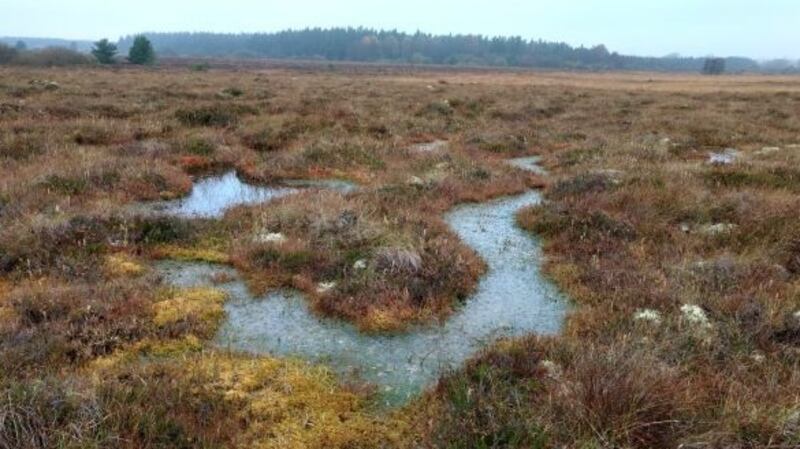
Make bogs/peatlands stores of carbon
Ireland's bogs make up an internationally important biosphere, yet they emit 4 million tonnes of CO2 a year, when they could easily switch from emitter to carbon store through rewetting and rehabilitation.
Focus on priorities relentlessly
Our emissions problems are different to those of most EU countries; so our focus has to be on overhauling public transport and reducing car dependency in cities; changing how we heat buildings including deploying district heating in large urban areas, and sustained reduction of methane associated with agriculture.
There has to be greater recognition of how action can deliver far beyond slashing emissions. Thus as climate researcher Sadhbh O’Neill of DCU has suggested, “the twin challenges of housing and climate put a spotlight on the potential for a deep decarbonisation pathway that simultaneously addresses a profound social crisis”.
Net-zero emissions, carbon neutrality and offsetting
Most countries are making big promises to achieve net-zero emissions or carbon neutrality by 2050.
There are notable differences between the two. Net zero is achieving an overall balance between carbon emissions produced and emissions taken out of the atmosphere – and is more demanding.
Carbon neutrality refers to a policy of not increasing emissions and of achieving carbon reduction through offsets ‑ whereas net zero means making changes to reduce carbon to the lowest amount, and offsetting as a last resort.
Offsetting is the action or process of compensating for emissions arising from industrial or other human activity, by participating in schemes designed to make equivalent reductions of carbon in the atmosphere.
In simple terms, offsetting one tonne of carbon means there will be one less tonne of carbon dioxide in the atmosphere than there would otherwise have been. For the individual it allows you to mitigate the climate impact of your flights and other travel emissions, when they can't be avoided while giving back to nature and local communities.
Climate justice
A "just transition" is the single most important social enabler in getting people on board while protecting the most vulnerable; those whose lives will be thrown out of kilter by new types of employment, traditional industries ending and new ways of getting about. This has to apply equally in our relationship with the developing world, backed by unstinting support for human rights.
Reward green actions
Not only should it be easy to do the right thing at the least possible financial cost, a stick is needed too. Increasingly penalising carbon pollution will achieve societal shift, so carbon taxes are necessary. Full account has to be taken of hard reality; up to a quarter of Irish households experience fuel poverty – for many that is about to be exacerbated by soaring gas prices this winter; another indication of the need to push on with switching to renewables.
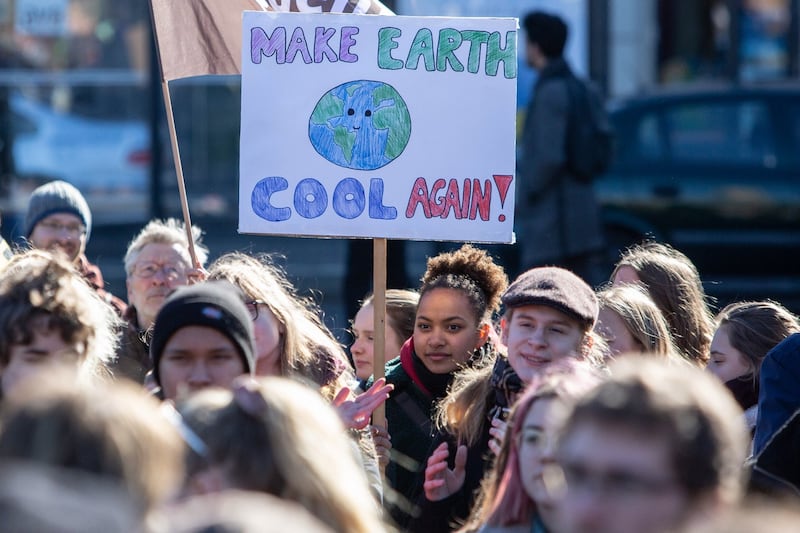
Climate-proof all Government actions
Every cent of State spending needs to answer the question, what climate impact will it have? Big projects with large carbon footprints are unacceptable. The pursuit of better options has to be backed by enabling infrastructure coming on board in a timely way. Otherwise emissions reductions will inevitably be back-loaded to the end of the decade with grave risks targets will be missed.
This week’s Wind Energy Ireland warning that actions must happen over the coming year to enable offshore projects come on stream by 2030 illustrates the difficulty. In many cases Government departments and State agencies responsible for enabling development of offshore wind energy were – and in some cases remain – chronically short of staff and resources, though it acknowledges some progress.
Foods systems overhaul
Global food systems require transformation if there is any chance to achieve the UN sustainable development goals by 2030. This has big implications for food-exporting countries like Ireland. Compounding this, is the need to redirect agriculture in line with a much-changed EU common agriculture policy.
The recent EU-US agreement committing to a 30 per cent methane reduction by 2030 based on 2020 levels puts it up to the Government. What is driving this is evidence it traps as much as 80 times the heat of CO2 over the first two decades. But it also means cutting methane emissions can deliver the quickest climate win and give the world breathing room needed to stave off the worst impacts of climate disruption.
A national land-use strategy is crucial to balance radical changes ranging across food production, bioenergy expansion and increased carbon capture using afforestation and hedgerows – while rewarding farmers for their environmental stewardship.
Put in place green finance
Developed countries need to deliver on climate finance. G7 countries promised more than a decade ago to make $100 billion in private and public finance available to developing countries every year between 2020 and 2025, to help them transition to low-carbon technologies and cope with extreme weather.
UK prime minister Boris Johnson (as COP26 host), confirmed this week a large shortfall still exists, but then US president Joe Biden committed to doubling its $5.7 billion a year contribution. Failure to deliver on this will undermine trust, making a breakthrough in Glasgow more unlikely.
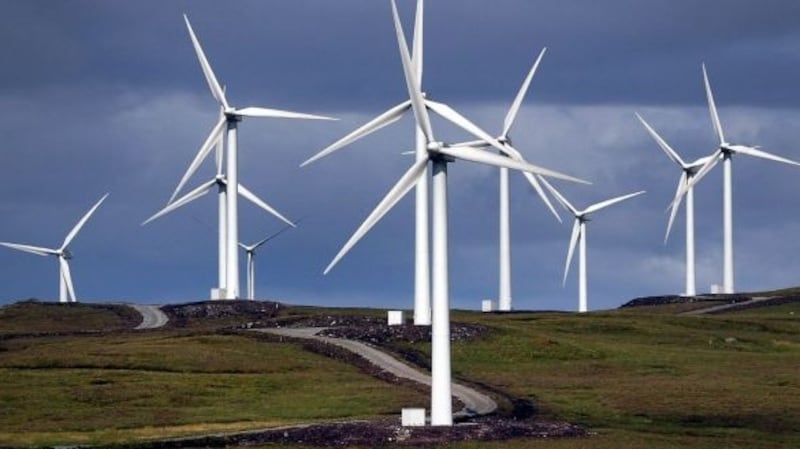
Force Big Finance to face up
A robust and transparent global governance system to facilitate trillions of euros in green investment is needed over coming decades.
The financial world also needs to face up to climate risk associated with more frequent or extreme weather events which, depending on location, will impact companies, and so they need to “transition risk” by moving towards a low-carbon economy. Measuring and reporting on climate risk and the progress of implementing science-based targets need to become standard practice for major companies.
Supporting developing states and Africa
The most vulnerable countries are the small islands of the South Pacific and in Africa, which will also see the biggest surge in population growth (predicted to almost double to nearly 2.5 billion by 2050). Ireland is targeting much of its development aid in supporting such countries, yet according to Trocaire is "only contributing 33 per cent of its fair share of global climate finance commitments to poorer countries vulnerable to climate disasters".
Climate innovation
The world has to end carbon-intensive manufacturing, in particular of cement and fertilisers – the backbone of many economies. Emission-free fuels such as green hydrogen need to be readily available.
There is progress but it’s still too slow. Human ingenuity has to be let loose to bring us to a better place. That includes delivering zero-emission aviation and removing carbon from the atmosphere at scale.

BLOCKERS TO PROGRESS
Climate anxiety
Worry about the fate of Earth and our place in it is increasingly evident both in children and adults, with some evidence, if unaddressed, it can impair health and heighten psychological stress. Climate devastation on your doorstep such as wildfires, storm surges accompanying hurricanes or floods sweeping all before them can induce shock – besides being the single biggest factor in persuading people there is a crisis.
Feeling anxious about all that is perfectly understandable, and a welcome sign of concern for planet and humankind. But letting it fester is no way out. Action, and the rule of activist Mary Robinson should apply here: “get personal, get angry, get involved.” Getting informed helps too.
Lack of trust
It is hard to build trust between wealthy states – responsible for the bulk of global warming - and poorer, already-suffering countries. Too many promises remain unfulfilled; too much reliance on voluntary commitments under the Paris Agreement; too much slow, incremental change when drastic action and far greater support for climate-vulnerable states is needed.
Communications gap
The science could not be clearer. The awareness of climate risk is unprecedented, but it is not prompting the huge shift in human behaviour required.
According to Rockström and Gaffney, the world needs “to provide enough information to grasp what we are losing, what is at stake, and to better understand why it is so difficulty for complex societies to act” in their collective best interest.
That calls for a communications exercise of gigantic scale where the conversation goes far beyond sound science and simplistic “we’re all in this together” messaging.
THE UNBLOCKERS
Collective action
It may sound like a vague term, but acting in unison across the economy and throughout society would be a gamechanger. Just look at the response to Covid – mass action for the betterment of all, underpinned by provision of great care for the vulnerable (especially older people); empathy and resilience. More of same is needed for climate.
Make it easier to do the right thing
Big change is stressful. So everything from one-stop shops to retrofit homes, to incredibly convenient public transport in our cities, to less bureaucracy and dirt-cheap renewable energy have to be part of the mix.
Unrelenting pursuit of solutions
This is back-to-the-wall time and no one option is to going to provide a cure all. If a solution is based on sound science and can decarbonise at scale, it's needed. Big technological fixes will come in time but their rollout must not exacerbate inequalities.
Genuine sustainability
The response should not be a narrow one, just about curbing emissions and global temperature rise. The pursuit of sustainability is much better, because that way there is a real chance the world will not only be on a cooling path, but the health of its citizens will be blessed with less air pollution and nature will be restored.

KEY PLAYERS
Heightened risk of climate catastrophe means an ability to respond quickly to the latest warning signs is vital. Focussing on climate solutions also helps to park feelings of doom and concentrate on implementation of what is known to work. This should apply to everyone with potential to affect change and set an example.
Superpowers
With COP26, the lead participants are the US, China and EU – with the UK as host. Their chief task is bringing India, Russia, Saudi Arabia, Australia, Brazil and others into line in Glasgow. Much will pivot on the negotiating skills of Biden's climate envoy John Kerry. China accounts for more emissions than the US, EU and UK combined. This week it said it would end investment in new overseas coal plants, making for more upbeat mood music.
Governments
They are core to multilateral action yet politicians continue to balk at bold actions. That is stalling momentum – in many instances, young people and voters are ahead of them in demanding action.
Corporations
Just 100 companies have been the source of 70 per cent of the world's emissions since 1988. Meanwhile there are 20 fossil fuel companies whose relentless exploitation of the world's oil, gas and coal reserves can be directly linked to more than one-third of all emissions in the modern era. Enough said. They know what's required. Less greenwashing, more being responsible for emissions in the country where their products are created and accounting for all emissions in their supply chains.
Cities
Many cities are taking decisive climate action, leading the way towards a healthier and more sustainable future and avoiding partisan politics along the way.
Communities
Engaged communities often are the best activists for decarbonisation as they see the immediate benefits in their surroundings including better quality of life and less air pollution.
Individuals
They get blamed by those who are more guilty. The companies polluting the planet most want you to think all we need to save us is carpooling and better recycling. That should be brushed aside in favour of getting engaged and raising your voice in the cause of front-loaded action, while pursuing lifestyle changes which may seem small but can make a difference.
Dear World: Enter our climate-writing competition for primary and secondary students, and you could win €2,000 for your school
This article was ammended on September 27th, 2021.
















